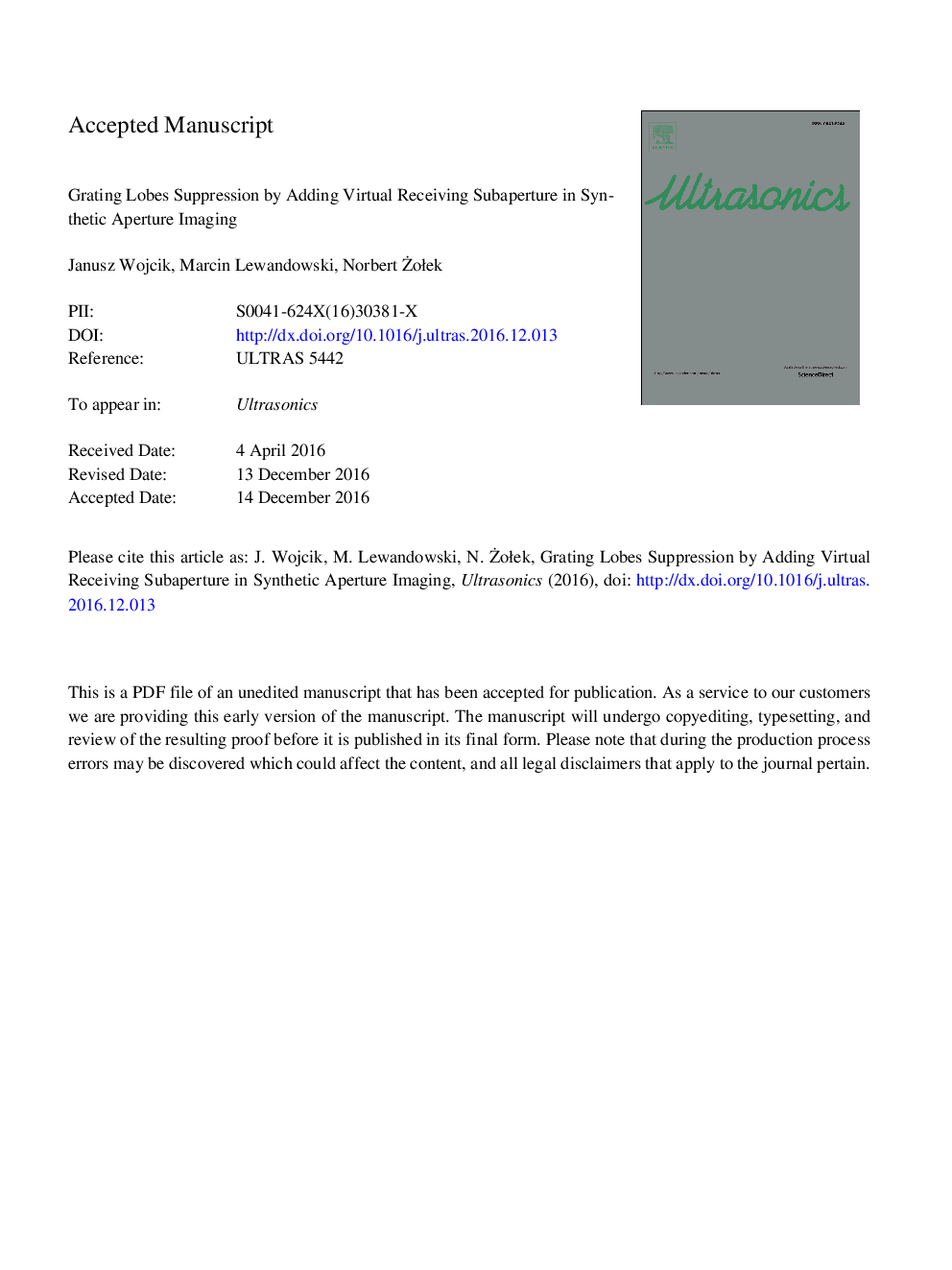| Article ID | Journal | Published Year | Pages | File Type |
|---|---|---|---|---|
| 5485370 | Ultrasonics | 2017 | 35 Pages |
Abstract
A method of suppression of grating lobes is presented, analyzed, and verified. The method is based on creating a Virtual Receiving Subaperture (VRS) by adding virtual transducer elements not existing in the physical layout of the receiver. The VRS channels are filled with data based on signals from real channels. The analytical model of the synthetic aperture imaging system's impulse response is presented to describe the properties of the VRS. The model shows a reduction of the receiving grating lobes' amplitude (with a comparison to the main lobe's amplitude) by a magnitude equal to the number of receiving transducer elements. It is shown that effective properties of the entire system with a VRS are similar to a system with a pitch in the receiving aperture that is twice as small. The numerical calculations of the impulse response show a doubling of the signal to noise ratio, which results in a reduction of the receiving grating lobes. For experimental validation, the generalized Plane Wave Imaging with and without the VRS is compared with a basic synthetic transmit aperture (STA) imaging. The experiment confirmed that the use of a VRS allows for visualization of the objects in a medium in which they are not imaged without a VRS or are visualized with a lower contrast. The reduction of grating lobes attained using the proposed method is at the level of 15Â dB in the visualization of the superficial cyst.
Related Topics
Physical Sciences and Engineering
Physics and Astronomy
Acoustics and Ultrasonics
Authors
Janusz Wojcik, Marcin Lewandowski, Norbert Å»oÅek,
